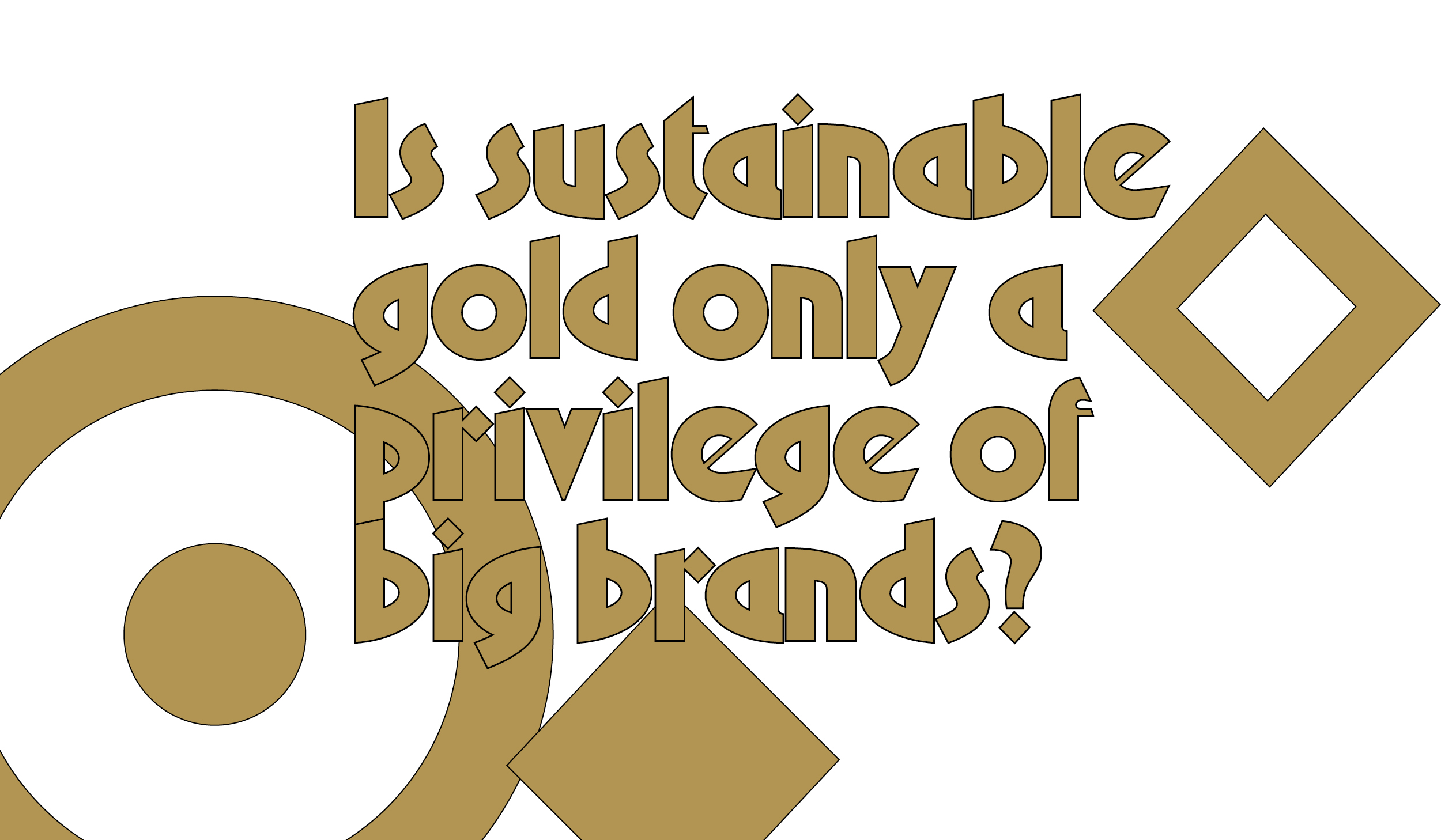Is Sustainable Gold Only a Privilege for Big Brands?
Recycled and recovered gold: sustainability starts here, but much more is needed. Damian Oettli, WWF Switzerland, comments on the Time for Change report, highlighting significant room for improvement in the sector.
Sustainability. A term that has become an everyday part of our lives and invaded every sector and business, even creating a kind of osmosis between different worlds.
Would you have ever thought, for example, that WWF and Jane Goodall—the renowned British ethologist and naturalist who revolutionized the way we understand our relationship with animals, as well as UN peace messenger—would be interested in jewelry?
Well yes, in times when all of us need to reckon with our own "footprint", or rather, the impact that every single one of our actions has on the environment, even those who have made it their business to defend fauna and flora turn their eyes to sectors that have been drawing resources from nature since the dawn of time.
Active in the study of chimpanzees in Tanzania since the 1960s, Goodall, after compiling a manual for educating young people on sustainability and peace (“Roots & Shoots - Hope in Action”), and seeing with her own eyes the damage done by gold mining in the Amazon Rainforest, recently collaborated with the Brilliant Earth brand on a collection made with only recycled gold and lab-grown diamonds.
A very clear signal, like the one launched on several occasions by the WWF, which began to actively engage with the watch and jewelry sectors in 2018 by producing reports full of insights for all industry players who would like to embark on the sustainability path.
Damian Oettli, Head of Markets for WWF Switzerland, tells us how and why WWF has focused on the jewelry and watch world:"The watch and jewelry industry has significant environmental and social impacts. Extracting precious metals requires extensive chemical inputs and large-scale land transformation, leading to the fragmentation and destruction of ecosystems. Approximately 52% of global gold production is used in the watch and jewelry industry (Source: World Gold Council, average annual gold supply and demand, 2013-2022).
This makes it the largest sector driving demand for gold, but also other precious metals, and diamonds. As such, the industry holds an immense responsibility as well as a huge potential to reshape sourcing practices and promote more responsible approaches to the extraction of these materials.
As WWF, we aim to support the industry in this endeavor by bringing these issues to the forefront, challenging key players to raise their ambition levels, and driving a shift toward responsible practices that can reduce the sector’s environmental footprint and promote social justice.
In 2018, for the first time WWF assessed how well prepared the 15 biggest Swiss industry players were for the environmental challenges ahead, how far they could trace their supply chain and how they worked with their suppliers and business partners to protect the environment and people.
In 2021, WWF published the report "The Impact of Gold" which highlights all the issues around gold mining. The recent "Time for Change" industry report is therefore the third publication about gold and the watch and jewelry industry.
The results illustrate that the industry has made progress in the past five years, but there remains significant room for improvement. None of the 21 brands concerned were ranked in the two highest categories, highlighting the significant room for improvement that remains in the industry. However, the industry has made substantial advances in terms of materiality analysis, monitoring, as well as sustainability reporting and disclosure.
Some of the brands have already set ambitious climate strategies and science-based greenhouse gas (GHG) emission reduction targets, but there is a need for companies to improve with regards to engagement with their suppliers, employees, or consumers in a more targeted and comprehensive way in their sustainability efforts."
If even big players struggle to be virtuous, is an SME to be considered out of the picture?
"Sustainability is a topic that concerns all types of companies. Every brand that sources any raw materials has a responsibility to ensure that these resources are extracted and produced responsibly," Oettli continues."Different brands or companies face different challenges and opportunities according to their size, integration, business model, or markets they are operating in. Whereas top brands of large corporates might have bigger impacts and easier access to resources, they might struggle with more complex supply chain issues than a smaller brand with flexibility and the possibility to directly work with primary sources of raw materials.
A clarification should also be made: since gold and other precious metals are non-renewable resources, they cannot be marketed as being sustainably mined. The term "sustainable gold" is therefore misleading. Companies that advertise with "sustainable gold" or similar claims are vulnerable to criticism and risk being accused of greenwashing.
It is therefore essential for companies, whatever their size, to establish and implement a comprehensive and systematically planned sustainability strategy that holistically addresses all pertinent areas, including climate action, biodiversity stewardship, responsible water management, traceability and transparency, human rights, and circularity.
Cooperation and stakeholder engagement are needed to achieve this. The first step (for small and large brands) is to create clarity around the value chains. Only when there is full transparency and transparency of the precious metals sourced, can the risks around their sourcing be assessed and tackled."


